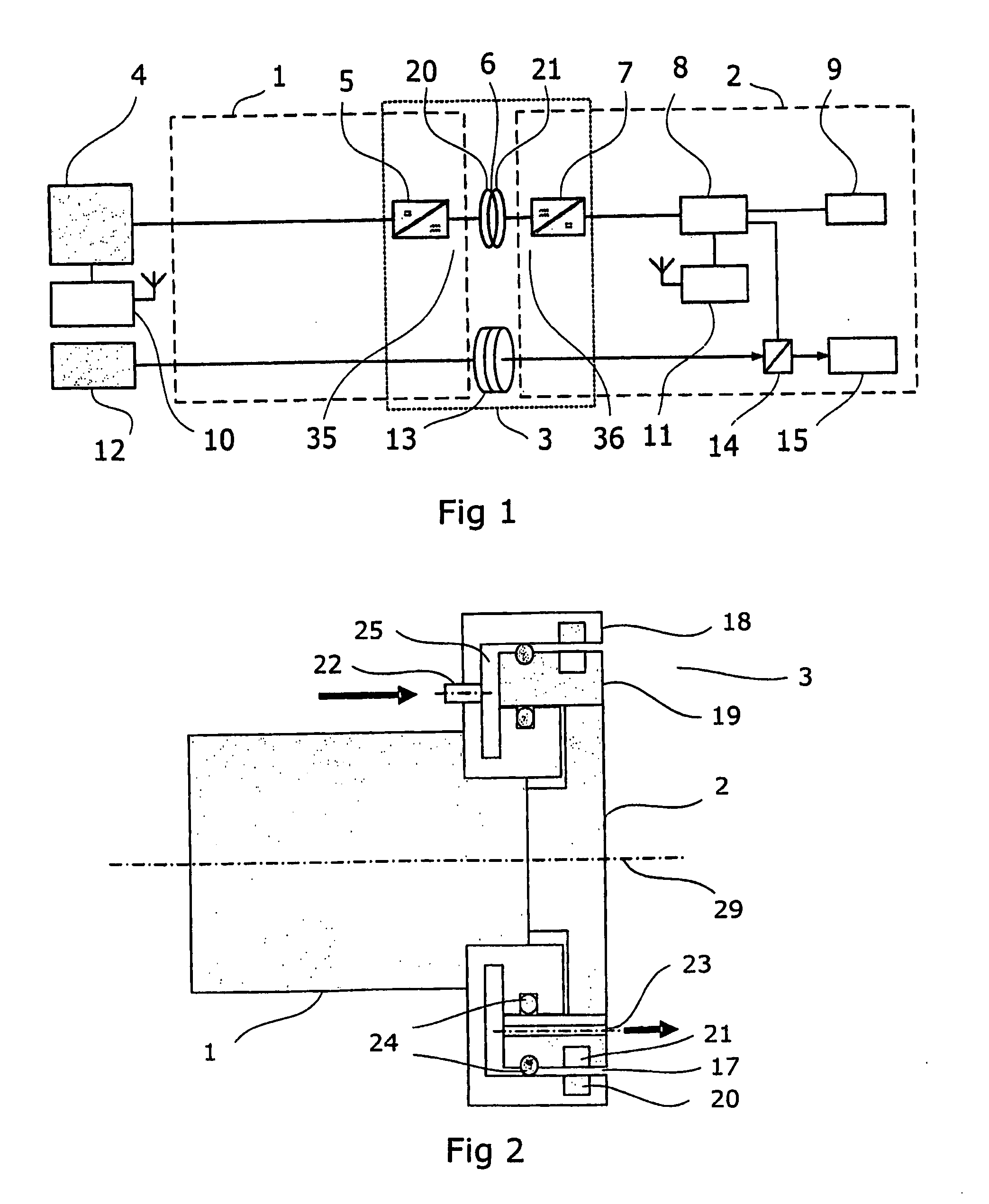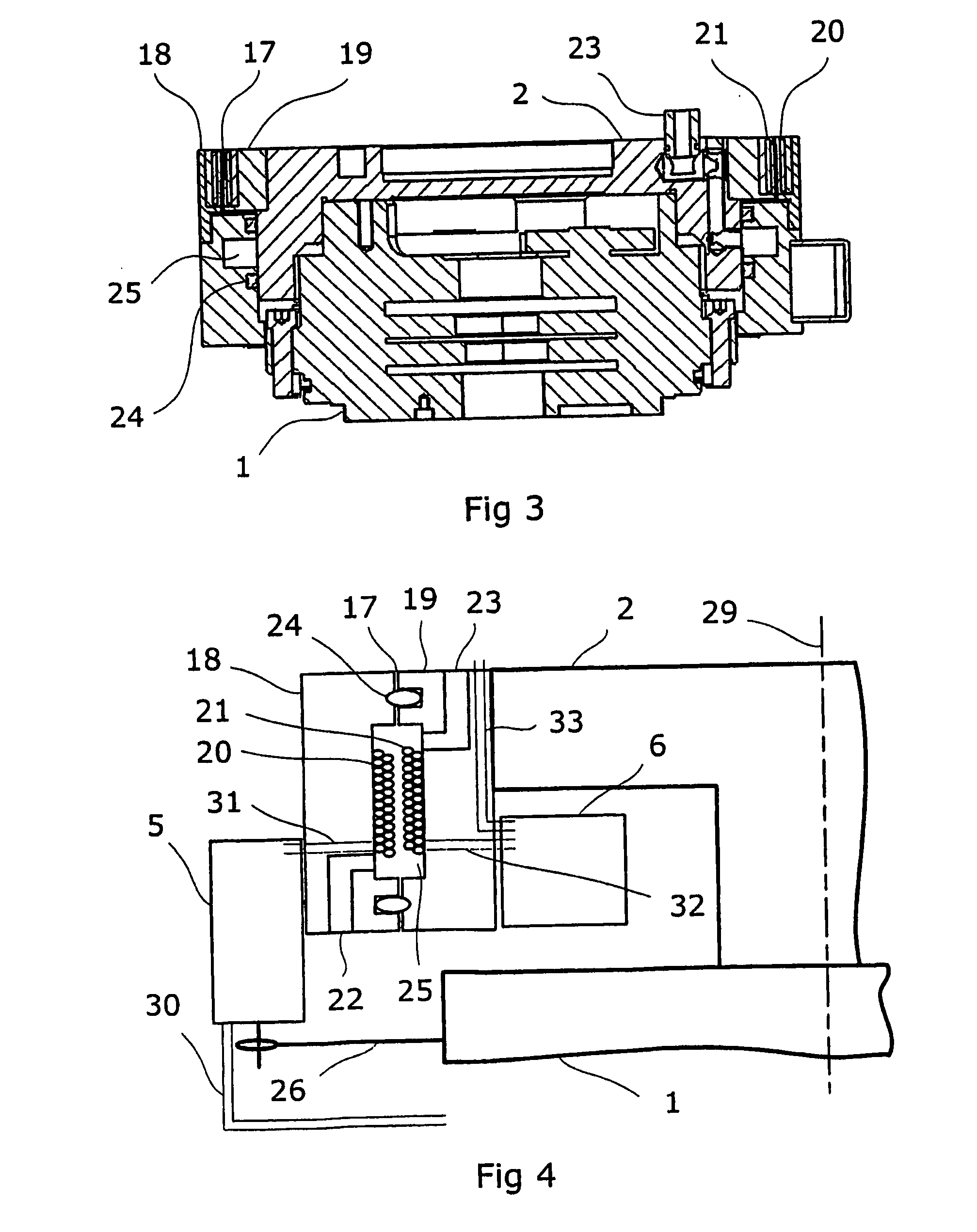Transmission Of Power Supply For Robot Applications Between A First Member And A Second Member Arranged Rotatable Relative To One Another
a technology for robot applications and power supply, which is applied in the direction of transformer/inductance circuits, circuit arrangements, inductances, etc., can solve the problems of difficult repair, difficult detection of contact failure or media leakage, and wear of individual cable parts and hoses of cabling
- Summary
- Abstract
- Description
- Claims
- Application Information
AI Technical Summary
Benefits of technology
Problems solved by technology
Method used
Image
Examples
second embodiment
[0049]the process media supply unit is shown in FIG. 3. A first part 18 comprising a first coil 20 in an open cavity is attached to the first robot part 1. A second part 19 comprising a second coil 21 in an open cavity is attached to the second robot part 2. The first and second part is separated by an airgap 17. The first and second coil is arranged to form a rotating electric power transfer unit for magnetic flux interaction across the airgap. In this embodiment the cavity 25 is formed as a circular groove in the first part 18. The groove is sealed off by a resilient tightening band 24 on each side of the groove. The cross section of the resilient tightening band has a square shape. Both of the resilient tightening bands are positioned on the same side of the second part. In order to protect the coils from receiving particles or dust from the environment the first or second part may comprise a lip to cover the airgap.
third embodiment
[0050]the process media supply unit is shown in FIG. 4. A first part 18 comprising a first coil 20 of a rotating electric power transfer unit is attached to the first robot part 1. A second part 19 comprising a second coil 21 of the rotating electric power transfer unit is attached to the second robot part 2. In this embodiment the cavity 25 is formed as circular grooves in both the first part 18 and the second part 19. The grooves are sealed off by resilient tightening bands 24 on each side of the cavity. In the example the cross section of the tightening bands has an oval shape. A first media channel 22 in the first part 18 is in fluid communication with the cavity 25. A second media channel 23 in the second part 19 is also in fluid communication with the cavity 25. Thus the fluid media supply passes through the first channel, the cavity and the second channel.
[0051]In the embodiment shown in FIG. 4 the cavity 25 contains both the first coil 20 and the second coil 21 of the rotati...
PUM
 Login to View More
Login to View More Abstract
Description
Claims
Application Information
 Login to View More
Login to View More - R&D
- Intellectual Property
- Life Sciences
- Materials
- Tech Scout
- Unparalleled Data Quality
- Higher Quality Content
- 60% Fewer Hallucinations
Browse by: Latest US Patents, China's latest patents, Technical Efficacy Thesaurus, Application Domain, Technology Topic, Popular Technical Reports.
© 2025 PatSnap. All rights reserved.Legal|Privacy policy|Modern Slavery Act Transparency Statement|Sitemap|About US| Contact US: help@patsnap.com



